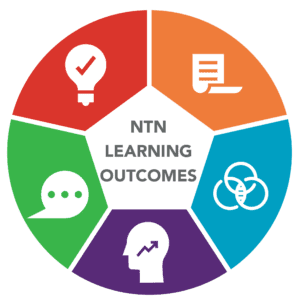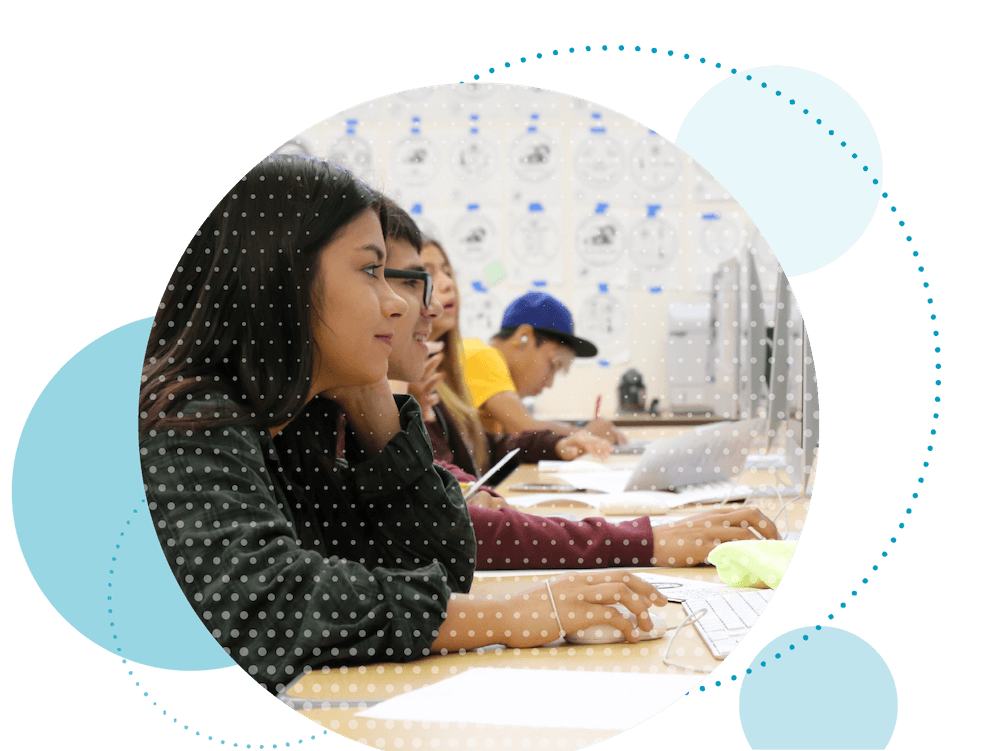Our Network
Resources and Tools
How to Use Assessments in Project Based Learning (PBL) for Effective Student Learning
What Are Project-Based Learning (PBL) Assessments?
The goal for assessment in PBL is for learners to apply knowledge and solve complex problems while developing essential skills. Educators need assessments that give them accurate information about student performance in these areas. PBL can provide context to shift the understanding of what assessment is and what it should do for educators and learners. The classroom culture shift away from management and compliance, to assessment for learning and growth is the underlying focus of assessment in project-based learning. This article will share key components of PBL Assessment with helpful resources and compare those to assessment in a more traditional learning environment.
Key Components of Effective PBL Assessments
Focus on Enduring Understandings and Learning Outcomes
A core tenant PBL design is to “begin with the end in mind.” By making sure that the backward design in projects is grounded in content standards, teachers are able to create a viable curriculum while fine-tuning their understanding of the essential ideas in their area.
The New Tech Network Learning Outcomes are five research-based outcomes designed to allow teachers to support and assess students based on a holistic picture of their skills while meeting state academic requirements. We believe that schools should prepare each student for post-secondary success with the knowledge skills and mindsets to be ready for college and career. Authentic development of these outcomes is, in many ways, the strongest “why” for PBL in the NTN model, and should factor in alongside disciplinary content in project and course design.
These five Learning Outcomes are:
- Knowledge and Thinking
- Agency
- Collaboration
- Written Communication
- Oral Communication

New Tech Network has designed Learning Outcome Rubrics to measure these outcomes in a way that helps students track their progress along a developmental continuum. Whether a student is just beginning to demonstrate collaboration skills or is proficient in oral communication skills, the rubrics give both students and teachers the feedback they need to continue growing.
By using these rubrics, we can go beyond surface-level assessment. Instead of asking, “Did the student get the right answer?” we ask, “How well is the student demonstrating this skill?” This deeper approach allows students to see exactly what skill they are proficient in and what they need to improve.
Feedback and Revision
Providing feedback to students on their performance is critical to their growth and development, but in order for feedback to impact student learning it needs to be timely, meaningful, and actionable. In more traditional classes the majority of feedback students receive comes in the form of grades and comments as summative feedback on assignments and tests. While this data gives students information about their performance, it is limited in how it can help motivate a student to take their learning to the next level. Just as PBL lets us move assessment into the middle of the learning process, it lets teachers situate feedback as part of students’ process of working through the project. Previously unread comments on a student essay take on new importance for the student when they are part of their feedback on a draft proposal, report, or other project artifact as part of a PBL unit.
The NTN Learning Outcome Rubrics do more than give students a score—they are tools for growth. For each outcome, a rubric or set of rubrics has been developed to help ensure that students are being provided with regular feedback on their growth and needs in each of these areas. They break down the key elements of each learning outcome and offer clear guidelines for what success looks like at each stage of development. This helps students become more self-aware and take ownership of their learning process.
Click the link to download samples of NTN’s Learning Outcome Rubrics.
Student Reflection & Self-Assessment
Measuring essential skills goes beyond the standardized test and should be grounded in a rubric that tracks how students progress in these skills to inform their learning. Effective measurement doesn’t just assess students, it provides a roadmap for improvement.
As students navigate “need-to-knows” and potential next steps related to those “need to knows”, they are engaged in continual reflection and self-assessment which makes them an active participant in the formative assessment process.
In a student-centered environment, all students take an active role in their learning. This takes on many forms including allowing students to give and receive feedback so that reflection and revision on their work can occur.
How Do Project Based Assessments Differ from Traditional Assessments?
Focus on Application vs. Memorization
While traditional assessments like quizzes, exit tickets, and problem sets often find a place in a PBL classroom, the primary measure of student learning comes from authentic and real-world project products and tasks. PBL tends to culminate in “performance assessments” like proposals, reports, presentations, and other products where students demonstrate their learning through tangible artifacts that can be assessed against clear and explicit criteria using a rubric or similar tool.
Performance assessments are integral to NTN’s model as a means for understanding where students are in the development of these skills and to inform teacher practice. These assessments go beyond traditional testing by evaluating how students apply skills and learning standards in meaningful ways.
An ongoing focus on performance assessment products is the foundation of classroom conversations about growth and performance as well as school-level conversations about effective practice.
Ongoing Assessment vs. One-Time Evaluation
For assessment to be a tool for student learning, we know that it needs to be moved earlier in the learning process rather than postponed until the end of instruction. The most effective assessments for learning are those that are “formative assessments” in that they are part of a process of making decisions about where a student is in their learning and where they need to go next. PBL makes formative assessment an almost inescapable aspect of day-to-day practice. While traditional classrooms may aspire to use assessment data to make instructional decisions, the responsive nature of PBL requires teachers to adapt each day’s learning activities in response to formal and informal assessments of student progress. This Edutopia video shows several examples of how assessment is naturally embedded throughout a project.
Frequent formative assessments and ongoing feedback are crucial in guiding students through each benchmark in the project process. PBL prioritizes asset-based feedback to further build on learner strengths and support growth in critical thinking skills over time.
Two examples of NTN’s Assessment Practices that can be embedded in a project and assess student learning are:
Running Rubrics: Using a rubric to capture conversations about progress helps students understand the criteria for the task and what next steps they might take so that they take charge of their own learning. Running Rubrics helps students who are working towards mastery take action on feedback in a project or assignment.
I used to think…Now I think: A formative assessment that helps students reflect on their thinking about a topic and explore how it has changed and encourages students to develop their reasoning abilities.
These practices along with other scaffolds teachers can use can be downloaded for free here in our sample NTN Practices Cards deck.
Assessing Collaborative Learning
Collaboration is a skill necessary not only for college and career readiness but also for day-to-day learning in a project-based and student-centered classroom. Facilitators should remember that collaborative skills must be intentionally scaffolded through teaching and practice before being assessed.
Many of us tend to believe collaboration is a static skill: you either have it or you don’t. In reality, we know that students can grow in their collaborative skills if they receive developmentally appropriate scaffolding. Teachers should define the indicators of collaborative skills; provide structured opportunities for students to collaborate; support student collaboration with tools and resources; and provide structures for students to set goals and reflect on collaborative skills. To help support the assessment of collaboration skills, NTN has developed Collaboration rubrics.
The Collaboration rubrics are used by teachers at NTN schools in a variety of ways:
- They decide which of the skills they want to focus on during a project, choose the corresponding row of the rubric, and include it in their project rubric.
- They have the students reflect upon the rubric throughout the project.
- They have students assess themselves at the end of the project, invoking language from the rubric.
- They use this rubric for Bookend Lessons, a lesson-plan structure that involves student reflection with the rubric, and student-centered teaching techniques.
Click to download a sample of a Collaboration Rubric for K-2.
Solutions in PBL Assessments
NTN’s Learning Outcome Rubrics provide actionable strategies to assess, monitor, and develop essential skills like collaboration, communication, critical thinking, and agency over time. With these rubrics, students can track their progress, and educators can provide the necessary feedback to help them continue growing.
As we continue to shift our focus in education from rote memorization to the development of lifelong skills, measuring these skills becomes more crucial than ever. NTN’s Learning Outcome Rubrics are not just a tool for NTN schools—they’re a framework that anyone can use to ensure that students are developing the critical skills they need for success in today’s world. When we measure what matters most we ensure that students are prepared to succeed.


